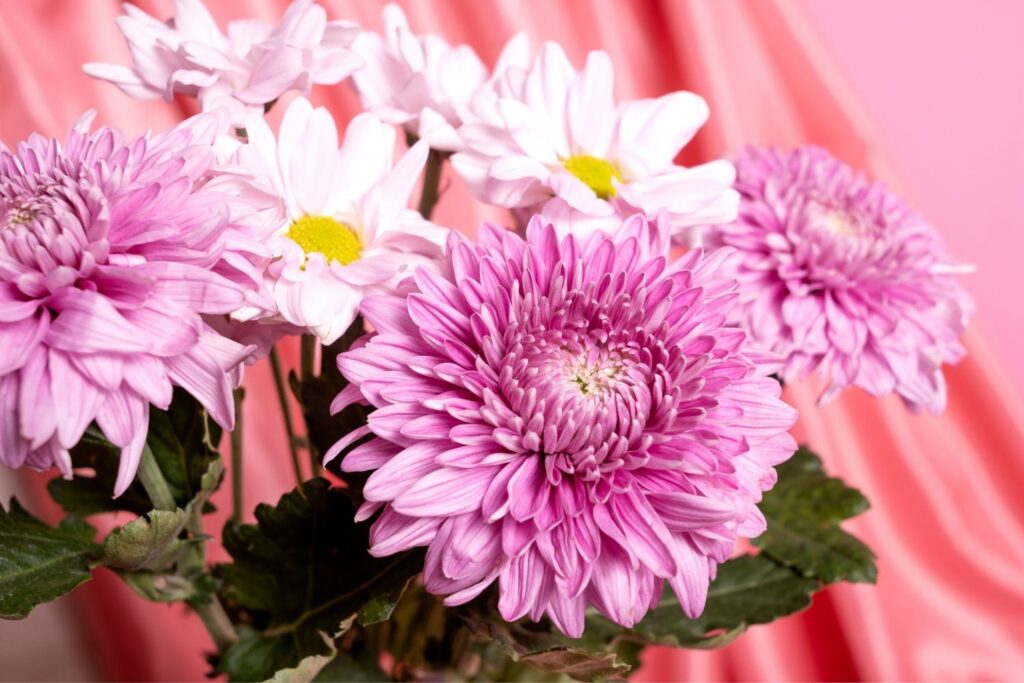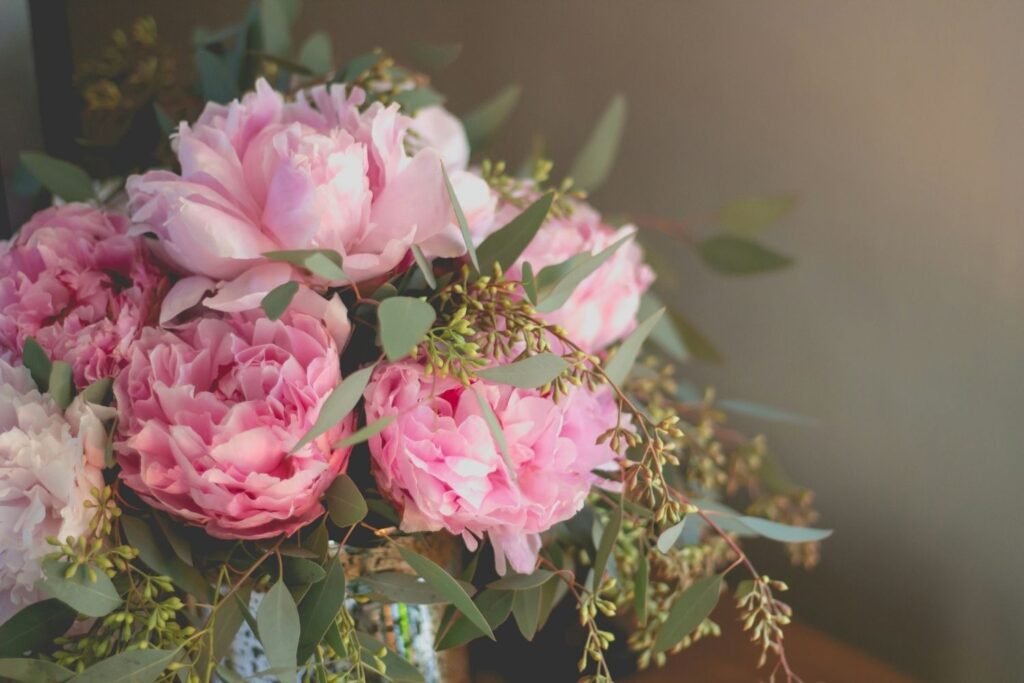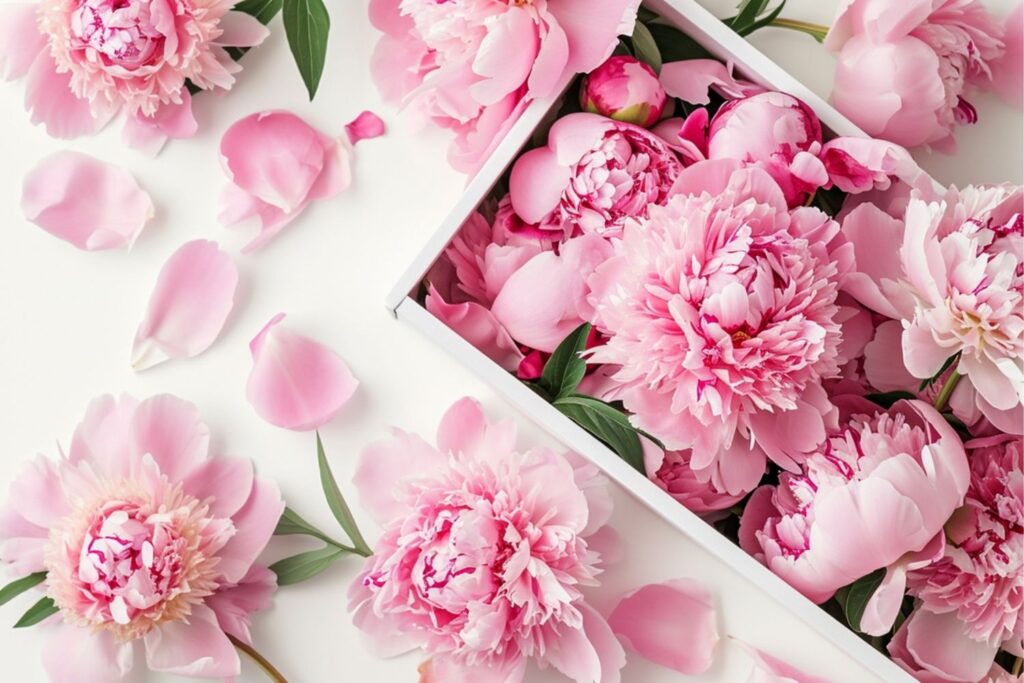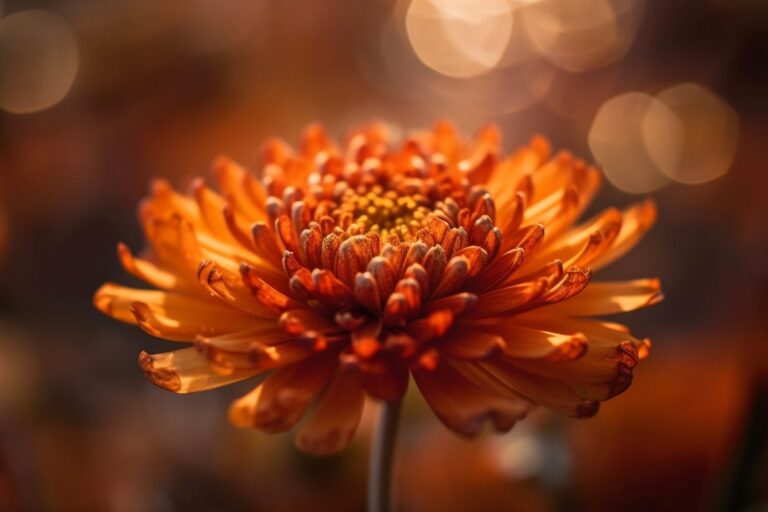As the year edges closer to its end, November arrives with a hush—the kind of peaceful pause that makes you take a deeper breath and maybe even reach for a cozy sweater. But in the middle of all that stillness, two flowers, with wildly different personalities, step into the spotlight: the bold, cheerful chrysanthemum and the soft, romantic peony.
Together, they represent the dual nature of November—warmth amid chill, and softness wrapped in strength. These aren’t just pretty petals; the November birth flowers are layered with meaning, history, and a quiet charm that speaks volumes.
Whether you’re celebrating a November birthday or just a fan of flowers with stories to tell, this duo is worth getting to know. Let’s dig into what they symbolize, where they come from, and how to bring a little of their magic into your world.

What Are Birth Flowers?
Ever wondered why certain flowers are tied to your birth month, kind of like zodiac signs with petals? That’s the beauty of birth month flowers. For centuries, people have looked to flowers as more than just decor—they were seen as meaningful tokens, each bloom whispering something unique depending on the month it represents.
The tradition traces back to ancient Rome, when offerings of seasonal blooms were made to celebrate birthdays. In the Victorian era, it evolved into a more symbolic practice, with flowers chosen specifically for their deeper meanings. Want to say something heartfelt without getting too mushy? Flowers had you covered.
Each month carries its own floral duo or solo star. March gets daffodils, October gets marigolds, and the November birth flowers bring us chrysanthemums and peonies—a surprising but beautiful pairing. While one radiates autumnal strength and warmth, the other brings a soft, romantic energy that lingers even as the weather cools.
Following flowers by month adds a personal and thoughtful touch to gifts, celebrations, or even a simple bouquet you pick up for yourself. Because let’s be honest—who doesn’t love a flower that says, “Hey, I was born just for you”?
November Birth Flower: Chrysanthemum
Bold, vibrant, and radiating autumnal warmth, the chrysanthemum blossoms as November’s treasured birth flower. Bursting in fiery hues of gold, crimson, and bronze, “mums” symbolize joy, longevity, and undying friendship across cultures.
Chrysanthemum: History and Symbolism
There’s a reason chrysanthemums are called the “queen of fall flowers.” These bold, vibrant blooms have been turning heads for centuries. Originating in China more than 2,000 years ago, chrysanthemums were once so revered they were cultivated exclusively for the nobility. They symbolized longevity and high status—and were even believed to hold medicinal properties that could promote long life.
Fast forward to Japan, where the chrysanthemum became the imperial crest and a national symbol. There’s even a festival held every year in its honor—a celebration of joy, renewal, and good fortune. That vibe carries across cultures: chrysanthemum symbolism includes cheerfulness, friendship, and respect. And in the Victorian language of flowers, gifting a chrysanthemum was a way of saying, “You’re a true friend.”
They’re resilient, versatile, and unapologetically bold—qualities that align beautifully with the spirit of November babies. In a season where nature begins to wind down, chrysanthemums are still blooming bright, holding their own as the final firework of the floral year.

Chrysanthemum: Colors and Their Meanings
Chrysanthemums don’t just bloom in a single signature look. Think of them more like the extroverts of the flower world—always showing up in vivid colors and different styles. Whether you’re expressing love, joy, loyalty, or admiration, there’s a mum for that. That’s part of the fun—you get to mix and match the message based on the moment.
- Red: A symbol of deep love and passion—perfect for romantic gestures or heartfelt declarations.
- Yellow: All about sunshine and smiles, yellow mums stand for joy, optimism, and friendship.
- White: Honesty, remembrance, and loyalty live in white chrysanthemums. They’re often used in more reflective or ceremonial arrangements.
- Purple: Rich and elegant, purple mums signify nobility, thoughtfulness, and a little touch of mystery.
- Pink: Warm, affectionate, and gentle, pink chrysanthemums are ideal for showing admiration or saying “I’m thinking of you.”
Knowing your chrysanthemum color meanings lets you build a bouquet that speaks without saying a word. Whether you’re surprising someone special or brightening your own space, picking the right shade adds an extra layer of meaning to every bloom.
Chrysanthemum: Growing and Caring
Chrysanthemums are surprisingly low-maintenance for how vibrant and showy they are—which is probably why gardeners love them as much as florists do. These blooms aren’t just pretty faces; they’re hardy, adaptable, and easy to keep happy with just a little care.
- Sunlight: Mums adore the sun. Make sure they get at least six hours of direct sunlight each day to keep them blooming strong.
- Watering: Water them regularly but don’t drown them. The goal is moist, not soggy. Letting the soil dry out completely between waterings can lead to wilting.
- Pinching: Want fuller plants with more blooms? Pinch back the stems early in the growing season—it encourages bushier growth and keeps them from getting leggy.
- Hardiness: These flowers thrive in the cooler months and are perfect for autumn planting. Many varieties can handle a light frost, making them true seasonal champs.
From tiny button mums to dramatic spider blooms, the range of chrysanthemum varieties means there’s a fit for every garden or arrangement. And once they settle in, they come back year after year with just a little seasonal upkeep—making them a reliable favorite that delivers beauty well into fall.
November Birth Flower: Peony
The peony is November’s second birth flower, known for its lush, full blooms. Symbolizing good fortune, happiness, and compassion, these flowers bring beauty and meaning to autumn bouquets. While often associated with spring, certain peony varieties bloom later, making them a lovely November surprise. Discover the simple charm and significance of this classic flower!
Peony: History and Symbolism
Peonies may be best known as springtime sweethearts, but they’ve found a surprising home in November’s bouquet. It may seem like a seasonal mismatch, but their message fits perfectly—beauty, emotion, and depth. These blooms have turned heads for centuries and continue to do so with their full, ruffled petals and soft, glowing presence. We at Ode à la Rose know peonies are the ultimate show-stoppers, and it’s no mystery why.
In ancient Greece, peonies were wrapped in myth and medicine, named after Paeon, a healer to the gods. In China and Japan, they symbolized honor, prosperity, and feminine beauty. You’ll often find them in classic art, painted like royalty in bloom.
In the Victorian era, peonies became the flower of secret admiration and bashful love. With their dramatic unfurling petals and lush size, they became symbols of romance that went beyond words.
So what does peony symbolism in November mean for you? Think heartfelt emotion, enduring affection, and a quiet strength that doesn’t need to shout to be felt. Just like November itself, peonies carry grace, presence, and a story worth telling.
Peony: Unique Characteristics
Peonies are the drama queens of the flower world—and we say that with admiration. Full, lush, and unapologetically grand, they have a way of turning any space into a moment. The second they bloom, they demand your attention, not with noise, but with beauty.
- Varieties: From soft, romantic herbaceous types to the elegant tree peonies, there’s a peony for every kind of floral mood. And then there are Itoh hybrids—a delightful mix of both worlds, combining form and resilience.
- Fragrance: Their scent ranges from delicate and fresh to rich and rosy, depending on the type. If you’ve ever stuck your nose into a blooming peony, you know—it’s a scent that makes you stop and smile.
- Bloom time: Peonies are classically spring bloomers, but thanks to careful growing and sourcing, they’ve found their way into arrangements all year long—even in the heart of fall.
There’s something timeless about peonies. Maybe it’s their old-world charm, maybe it’s how they unfurl with flair. Whatever it is, they bring a certain magic to everything they touch—whether that’s a bridal bouquet, a birthday arrangement, or just your favorite windowsill.

Peony: Growing and Caring
Peonies may ask for a little patience, but they pay it back tenfold with breathtaking blooms that feel like a reward for waiting. These perennials thrive when you give them just the right conditions—and once they settle in, they’ll grace your garden year after year.
- Sunlight: Peonies love the sun. Make sure they get at least six hours of it daily for those big, beautiful blooms.
- Soil: Well-drained soil is key. Peonies aren’t fans of soggy roots, and they prefer a stable home—once planted, they really don’t like being moved.
- Watering: Deep watering less often is better than a little every day. It helps develop strong, deep roots.
- Winter Prep: As the season wraps up, cut back foliage in the fall. It keeps disease at bay and gives your plant a fresh start come spring.
Caring for peonies might feel a bit hands-on at first, but their return every year is always worth it. Like many November folks, they’re reliable, a little dramatic, and full of charm when the timing is right.
How to Use November Birth Flowers
Celebrate November’s birth flowers—the chrysanthemum and peony—with simple, meaningful touches.
1. In Bouquets and Arrangements
Both chrysanthemums and peonies are stars in floral arrangements. Chrysanthemums bring bold color and texture, while peonies add softness and romance. Paired together, they balance each other beautifully.
A mixed bouquet of autumnal mums and soft blush peonies creates a memorable birthday or holiday gift, rich in seasonal elegance.
2. As Gifts
Looking for November birth flower gifts? A bouquet isn’t the only option. You can also gift:
- Potted chrysanthemums for plant lovers
- Peony-scented candles or perfumes
- Art prints or jewelry inspired by floral motifs
These thoughtful touches show you know someone’s birth month—and what it stands for.

3. In Home Decor
Chrysanthemums bring warmth to fall centerpieces and porch displays, while peonies (fresh or dried) look stunning in vases or wreaths. Their beauty and meaning can brighten any space, any time of year.
Fun Facts About November Birth Flowers
Curious about what makes chrysanthemums and peonies even more fascinating? Here are a few charming tidbits that show just how rich and storied these blooms really are:
- In Japan, chrysanthemums are celebrated during the annual “Festival of Happiness,” a tradition that’s been around since the 8th century.
- The word “chrysanthemum” comes from the Greek words “chrysos” (gold) and “anthemon” (flower), a nod to the golden blooms that started it all.
- In some cultures, chrysanthemums are believed to drive away evil spirits when placed in a home.
- Peonies were once considered so precious in ancient China that only royalty could grow them.
- The peony is the official flower of China and is often referred to as the “king of flowers.”
- Peonies are known for their long life—once planted, they can thrive for decades, with some living over 100 years.
- Both chrysanthemums and peonies have been used in traditional medicine to treat a range of ailments.
- In the language of flowers, gifting a red chrysanthemum means “I love you.”
- Some types of chrysanthemums are edible and used in teas or salads in East Asian cuisine.
From royal courts and ancient myths to modern-day bouquets, these flowers have been making statements for centuries—and they’re not done yet.
Conclusion
Chrysanthemums and peonies might come from different seasons, but together, they form a perfect pairing for November. One brings a burst of autumnal cheer, the other a touch of romantic depth. Both reflect the richness and complexity of those born in this month.
So whether you’re celebrating a birthday, shopping for a meaningful gift, or just drawn to the beauty of these blooms, the November birth flower meaning offers something special. A little joy, a little love, and a whole lot of charm.





